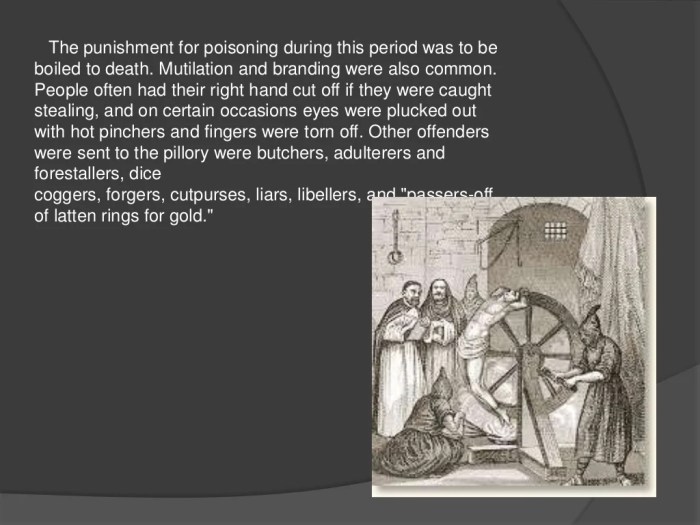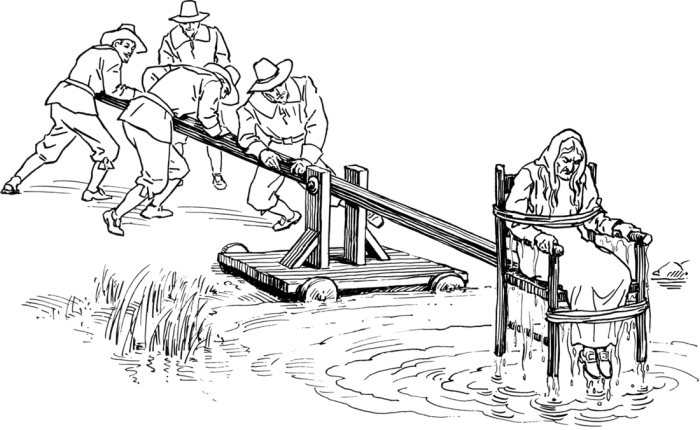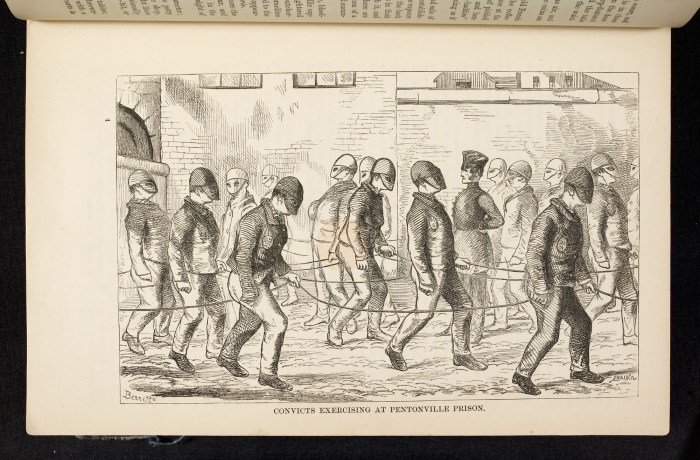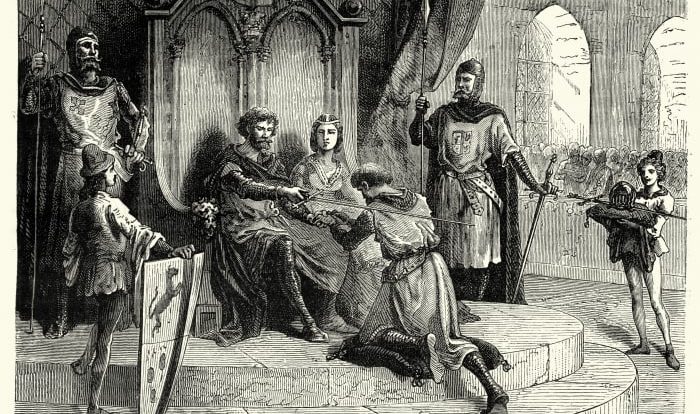Crime and punishment during the Elizabethan era provide a fascinating glimpse into the social, legal, and cultural landscape of England during the 16th century. This era was marked by significant changes in law enforcement, social structure, and religious beliefs, all of which influenced the nature of crime and its consequences.
The Elizabethan era witnessed a rise in urbanization, which brought with it new challenges for law enforcement. The growth of cities led to an increase in poverty and inequality, which in turn contributed to higher crime rates. The government responded by enacting stricter laws and establishing new institutions, such as the Star Chamber, to enforce criminal justice.
Elizabethan Criminal Law
The Elizabethan era was marked by a complex and evolving legal framework that governed criminal behavior. The laws were largely based on common law, which was developed through court decisions over time, and statutes enacted by Parliament.
The severity of punishments for crimes varied depending on the offense. For example, treason, the highest crime in the land, was punishable by hanging, drawing, and quartering. Other serious crimes, such as murder, robbery, and rape, were also punishable by death.
The Star Chamber was a special court that was established in 1487 to deal with crimes that were considered to be a threat to the state. The Star Chamber had a reputation for being harsh and arbitrary, and its use of torture to extract confessions was widely criticized.
Crime and Social Class
Social class played a significant role in the Elizabethan criminal justice system. The wealthy and powerful were often able to escape punishment for crimes, while the poor and marginalized were more likely to be convicted and punished severely.
- For example, a wealthy landowner who killed a peasant might be fined or imprisoned, while a poor peasant who stole a loaf of bread might be hanged.
- The wealthy also had access to better legal representation, which gave them an advantage in court.
Crime and Gender: Crime And Punishment During The Elizabethan Era
Women were treated differently from men in the Elizabethan criminal justice system. They were more likely to be convicted of crimes, and they were often punished more severely than men for the same crimes.
- For example, a woman who was convicted of murder might be burned at the stake, while a man who was convicted of the same crime might be hanged.
- Women were also more likely to be accused of witchcraft, which was a capital crime.
Crime and Religion

Religion played a significant role in Elizabethan criminal justice. The state church, the Church of England, was closely aligned with the government, and religious offenses were often treated as crimes against the state.
- For example, heresy, the belief in religious doctrines that were contrary to the teachings of the Church of England, was a capital crime.
- Other religious offenses, such as blasphemy and witchcraft, were also punishable by death.
Crime and Urbanization

The growth of cities in Elizabethan England led to an increase in crime rates. The crowded and unsanitary conditions in cities provided a breeding ground for crime, and the anonymity of city life made it easier for criminals to escape detection.
- For example, London, the largest city in England, was home to a wide variety of crimes, including theft, robbery, and murder.
- The government responded to the increase in crime by increasing the number of law enforcement officers and by building new prisons.
Crime and Punishment in Literature

Crime and punishment were common themes in Elizabethan literature. Writers such as William Shakespeare and Christopher Marlowe used crime to explore social, moral, and political issues.
- For example, Shakespeare’s play “Hamlet” explores the themes of murder, revenge, and justice.
- Marlowe’s play “The Jew of Malta” explores the themes of anti-Semitism and greed.
Key Questions Answered
What were the most common crimes during the Elizabethan era?
The most common crimes during the Elizabethan era were theft, assault, and murder. Theft was particularly common in urban areas, where poverty and inequality were rampant. Assault was also common, often resulting from disputes between neighbors or acquaintances. Murder was a relatively rare crime, but it was often punished severely.
How did the law differ for different social classes during the Elizabethan era?
The law was applied differently to different social classes during the Elizabethan era. The wealthy and powerful were often able to escape punishment for crimes that would have resulted in severe penalties for the poor. This was due in part to the fact that the wealthy had access to better legal representation and could often bribe officials.
What was the role of religion in crime and punishment during the Elizabethan era?
Religion played a significant role in crime and punishment during the Elizabethan era. The Protestant Reformation had led to a rise in religious tensions, and many crimes were motivated by religious differences. The government also used religion to justify its own actions, often punishing criminals for religious offenses.
